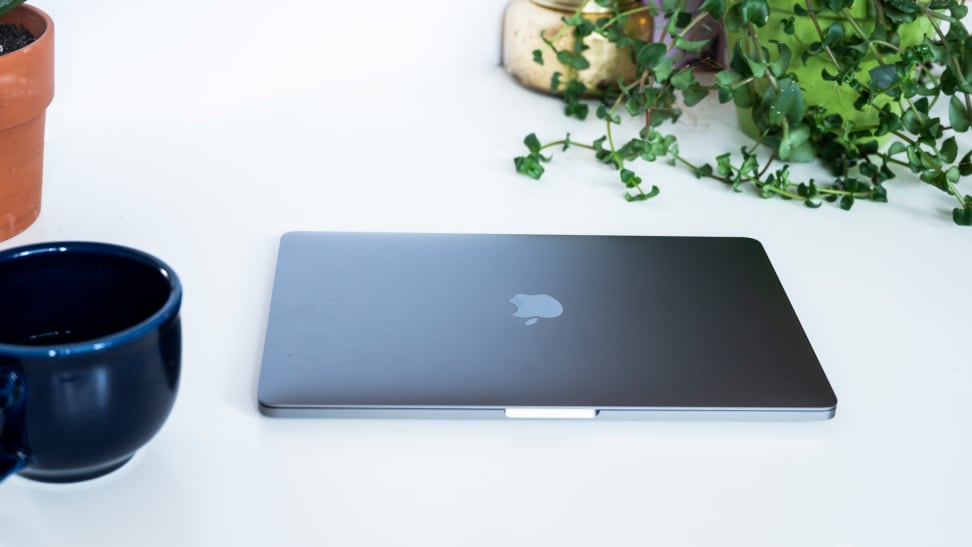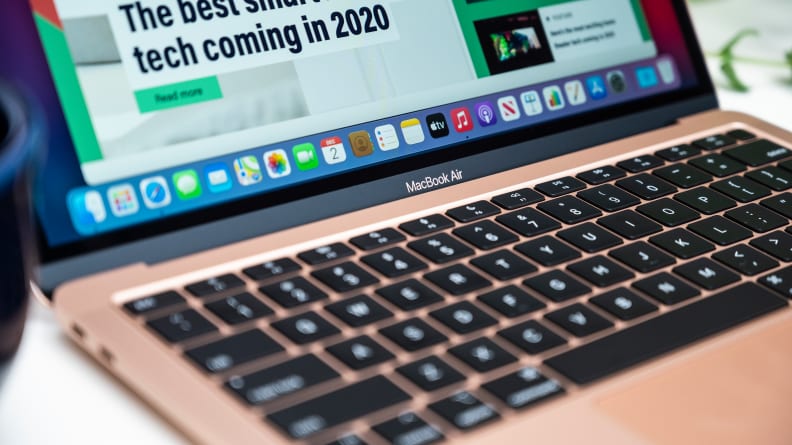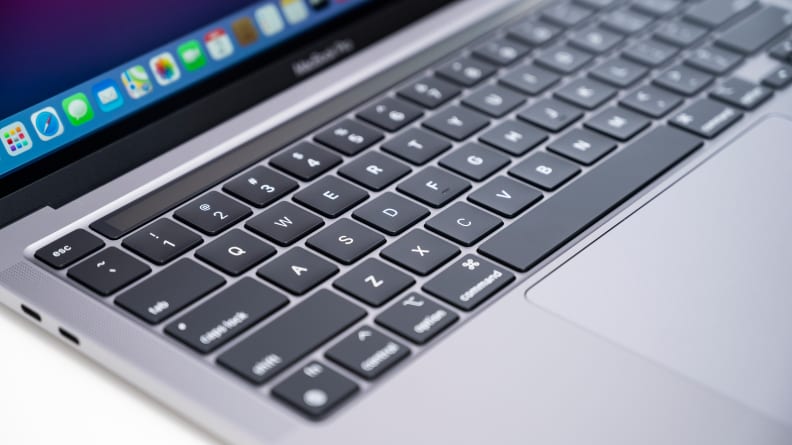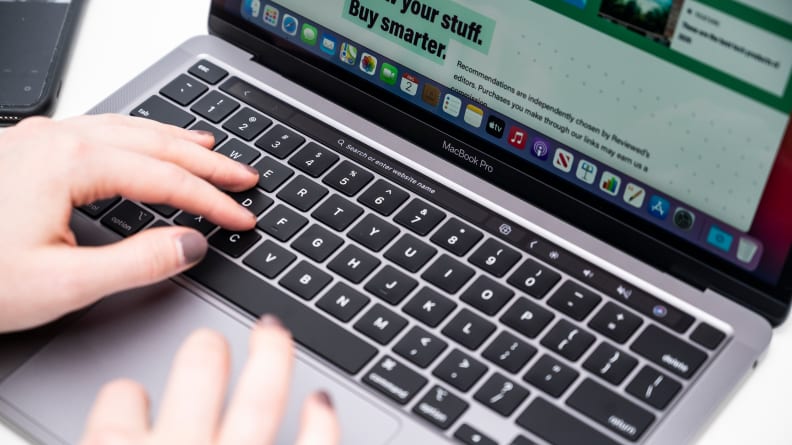MacBook Pro vs MacBook Air: Which do you actually need?
The M1 MacBooks make few tradeoffs, but how do they differ?


 Credit:
Reviewed / Betsey Goldwasser
Credit:
Reviewed / Betsey Goldwasser
Products are chosen independently by our editors. Purchases made through our links may earn us a commission.
When Apple debuted its new M1 MacBook Pro and MacBook Air last year, it raised the bar on what we expect from a laptop. From 14 hours of battery life to performance that puts $4,000 machines to shame, the M1 MacBooks are the best laptops we’ve seen in a very long time.
We know the MacBooks are better than their direct competitors, but how do you know which one is right for you? As similar as the MacBook Air may seem to the MacBook Pro 13, there are a few key differences. While the MacBook Pro 13 is more expensive, it has a couple of features that the MacBook Air lacks—most notably a fan, a touch bar, and a larger battery capacity. From a sheer value standpoint, the Macbook Air makes sense for most folks. But ultimately, whether the differences are large enough to justify the $300+ jump depends on your needs. Here's how it all breaks down.
Price

At $999, the MacBook Air is the best-value laptop we've seen in years.
Starting at $999, the MacBook Air is one outstanding value. If you want to have the exact same performance as the MacBook Pro, you can upgrade your M1 chip to the 8-core GPU version for $1,249 ($50 less than the base MacBook Pro 13), but you will miss out on the Pro's extra hour of battery life.
However, we suggest throwing money toward more RAM and storage, since both the Pro and the Air come with 8GB of RAM and 256GB of SSD storage, and you won’t be able to upgrade them in the future. The upgrades are expensive, but life will be easier with a 512GB storage drive if you don’t want to rely on cloud storage.
Our pick: MacBook Air
Design

While both the Air and the Pro 13 are about the same size and weight, there are a few key differences.
If you gave the MacBook Pro 13 and the MacBook Air a cursory glance, you’d be forgiven for thinking they’re the same laptop. They both have the same sharp display, Magic keyboard, glassy trackpad, and best-in-class sound. They’re both about the same size and weight, at just around three pounds. They also (unfortunately) have an identical port selection: two measly Thunderbolt ports and a headphone jack.
If you love the aesthetic of a rose gold MacBook, you’ll have to choose the Air, as the Pro 13 only comes in Silver and Space Grey (of course, the Air also comes in those colors if you're more straightlaced in your laptop design). On the other hand, the more conventionally colored chassis on the Pro packs a fan and a Touch Bar. The Pro 13 is also a little more squared-off than the Air, which gives it a slightly more industrial vibe.
In our extensive testing, the M1 MacBooks never got hot enough for the MacBook Pro’s fan to be useful. Unless you adore the Touch Bar, there’s really no standout feature that sets the Pro 13 apart from the MacBook Air.
Our Pick: MacBook Air
Performance

The MacBook Air and MacBook Pro 13 both share the M1 processor, but the base MacBook Pro 13 has slightly more graphics power than the base MacBook Air.
For a lot of folks, what matters most is how well the laptop can handle everyday workloads. Both laptops have an 8-core M1 central processor, which delivers virtually the same results. The M1 MacBooks consistently outperform almost all other Windows laptops by twenty percent or more. Whether you use your MacBook to check emails or compile code you’ll almost never run into any lag.
The only laptops able to match the M1’s insane performance are those with flagship processors, like the latest generations of Intel’s Core i9 and AMD’s Ryzen 9 processors. Usually, those processors are reserved for laptops that cost upwards of $2,000 and come with huge fans and bulky cooling, whereas even the base $999 MacBook Air has the M1 processor. Even without the fan, the Air is just as fast, averaging results within 0.03% of the MacBook Pro 13. That means the $1,000 Air can easily outpace even a $3,000 Intel-based MacBook Pro from early 2020.

Both laptops are uber-powerful, but the MacBook Pro has a razor-thin advantage when it comes to graphics power.
When we look at the MacBooks' graphics performance, we get a different picture. Modern CPUs and graphics cards are made up of multiple “cores” that spread the workaround. Oftentimes, one of these cores won’t be manufactured right. But instead of throwing out the whole part, that core will just be shut off and the part will be sold for less money since it will be a bit slower. The chips in the MacBook Pro have the full 8-core CPU and 8-core GPU. The MacBook Air has the same 8-core CPU, but the cheapest version has GPUs with one deactivated core. In practice, that means that while most tasks will perform the same on either computer, some graphics-intensive tasks, like running games or modeling software, will take a performance hit, putting the Macbook Pro 13 ahead.
But don’t take this to mean the Air is a slacker. While the Pro managed to pull 33 frames per second when running World of Warcraft at max graphics settings, the Air pulled 23 frames per second on max and the old Intel-based MacBook Pro 13 struggled to make 25 frames per second on medium graphics settings. While neither the M1 Pro or M1 Air are as snappy as a gaming laptop, they’re more than capable of achieving 60 frames per second on medium or low settings in any moderately demanding 3D title.
Our Pick: MacBook Pro 13
Battery Life
When it comes to battery life, the MacBook Pro 13 has a slight advantage over the Air. While the Air can last for 13 hours on a charge (which is still much better than the best Windows laptops, which get just over 9 hours), the Pro pushes a little further and squeezes 14 hours out of its battery. If you play with power-saving settings, you’re sure to get even more battery life (some people have reportedly used their MacBook Pros for twenty hours on a single charge!).
While most of us won’t notice the difference between the Air and the Pro 13’s graphics prowess and battery life, those who are constantly away from plugs and those who game or model may find it’s worth splurging on the MacBook Pro 13. Otherwise, the $300 cheaper MacBook Air will give you the same top-tier performance overall as the Pro 13.
Our Pick: MacBook Pro 13
And the winner is...
For most people, the $999 MacBook Air will be the best pick. It provides jaw-dropping performance, a fantastic user experience, and a killer thirteen-hour battery life.
Paying the extra money for the $1,299 MacBook Pro 13 gets you an extra hour of battery life and slightly better graphics performance, which could matter if you do a lot of gaming or heavy graphical work. So there is reason to go for the Pro for some heavy users.
The best news about this comparison is that you can’t go wrong with either laptop, as they're both leagues above the rest of the competition in their price class right now.
